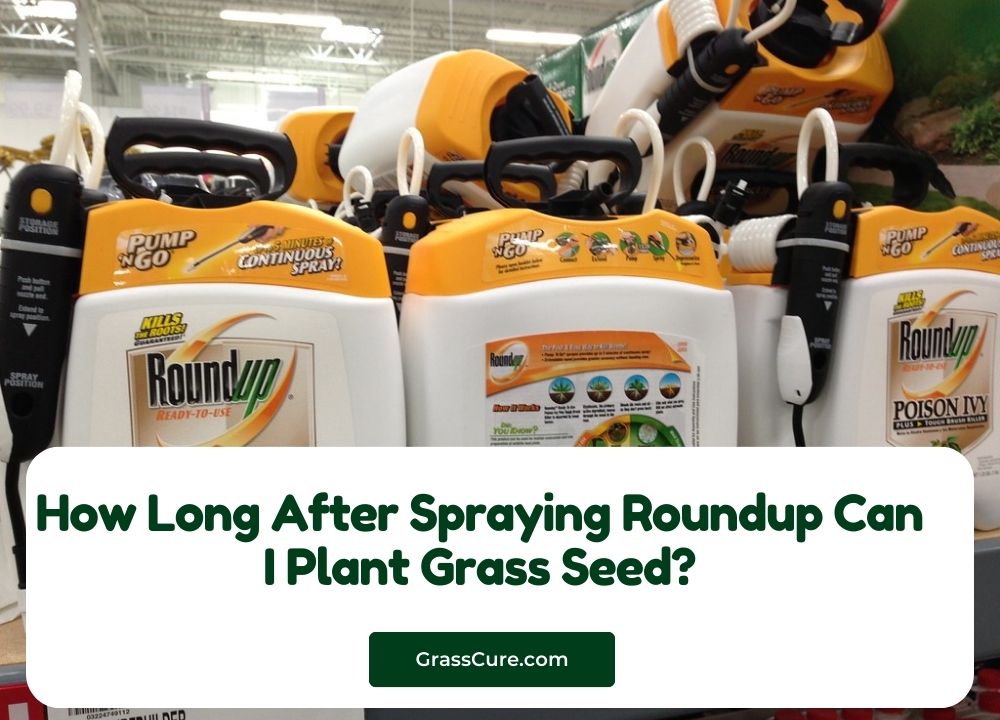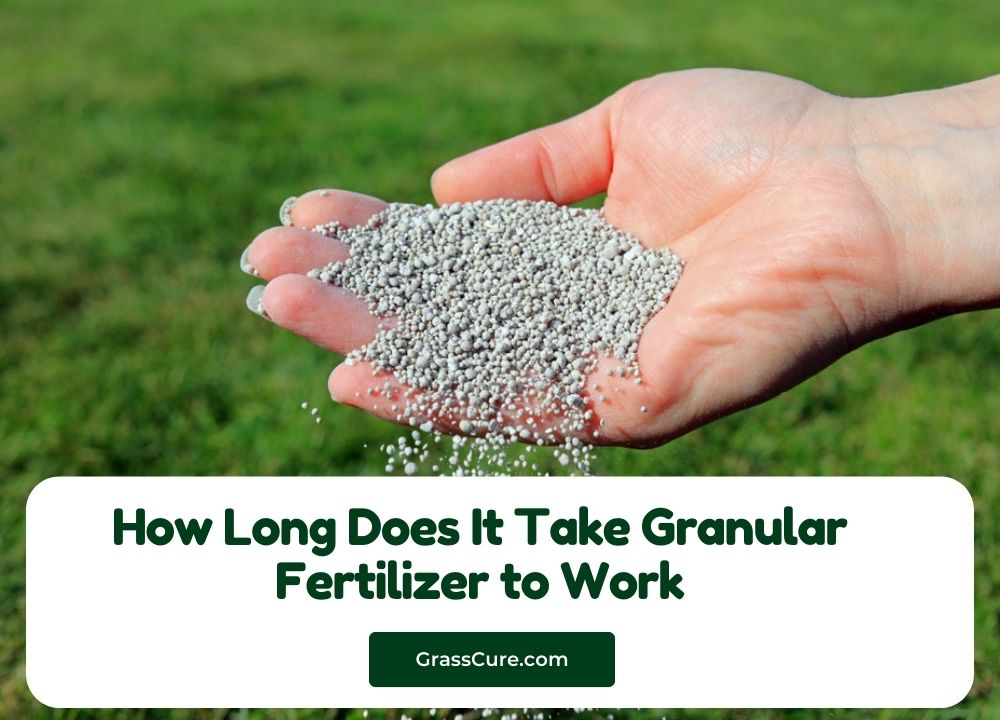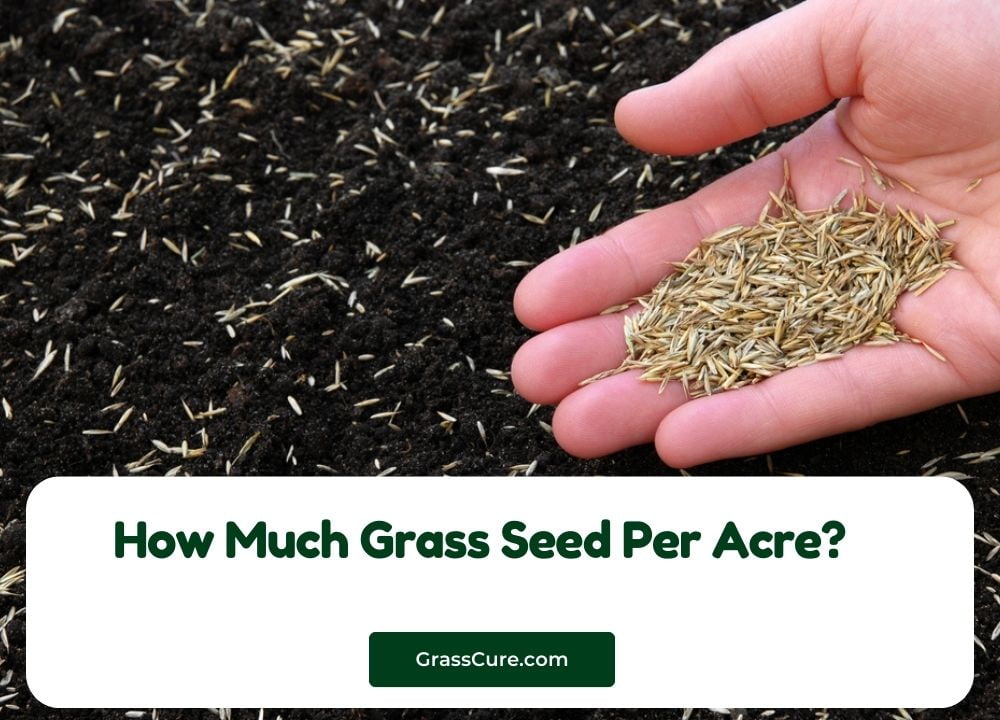Grass, that lush green carpet covering our lawns and landscapes, is a plant we often take for granted. Yet, it plays a vital role in our ecosystems, from providing food for wildlife and livestock to serving as a carbon sink. We must delve into its remarkable reproduction ability to truly appreciate this ubiquitous and seemingly ordinary plant.
In this blog post, we’ll unravel how does grass reproduce, exploring its basic anatomy and the fascinating mechanisms it employs for survival and propagation. By the end of this journey, you’ll gain a newfound appreciation for the green under your feet and the intricate ways it ensures its existence. Read ahead and learn more about the reproduction of meadows.
Contents
The Anatomy of Grass:
It’s essential to know what a grass plant looks like inside. Let’s take a closer look at the parts of a grass plant and how they work together.
The Structure of a Grass Plant:
Grass plants have a simple structure compared to many other plants. Here are the essential parts:
- Roots: Grass has roots that anchor it in the soil. These roots also absorb water and nutrients from the ground to help the plant grow.
- Stems: Grass stems are the parts that hold the leaves and flowers (if they have any). They’re usually relatively short, except for some tall grasses like bamboo.
- Leaves: Grass leaves are long and narrow. They’re where the plant makes its food through a process called photosynthesis. That’s why the grass is so green!
Role of Roots, Stems, and Leaves in Reproduction:
Now, let’s see how these parts help grass reproduce:
- Roots: While roots mainly help grass stay in place and get nutrients, some grasses can reproduce through their roots. They send out underground stems called “rhizomes” or “stolons” that can grow into new grass plants. Think of them as grass runners!
- Stems: Stems in grasses don’t play a significant role in reproduction, but they support the leaves and sometimes the flowers if the grass has them.
- Leaves: Leaves are vital for reproduction. Some grasses produce tiny flowers that contain reproductive parts. Leaves help catch sunlight, which is crucial for making seeds (we’ll learn more about this in the “Sexual Reproduction” section).
Reproduction in Grass: Asexual and Sexual
Grass uses two main methods to make more of itself: asexual and sexual reproduction. These methods are different, but both are essential for grass survival.
Asexual Reproduction:
Asexual reproduction in grass is like cloning—it allows grass to make exact copies of itself without the need for seeds. Here are the key ways grass accomplishes this:
- Rhizomes: Some grasses have underground stems called rhizomes. These rhizomes grow horizontally and sprout new grass shoots above the ground. It’s like the grass is sending out runners to create new plants.
- Stolons: Stolons are similar to rhizomes but grow horizontally above the ground. They, too, produce new grass plants along their path.
Importance of Asexual Reproduction:
Asexual reproduction is handy for grass because it quickly covers areas with the same type of grass. It’s how your lawn becomes a thick, green carpet over time. It also helps grass recover from damage, like when you mow your lawn.
Sexual Reproduction:
Sexual reproduction in grass is a bit more complex. It involves the production of seeds, which can grow into new grass plants. Here’s how it works:
- Flowers: Some grasses produce tiny flowers. These flowers contain male parts (stamens) that make pollen and female parts (pistils) that receive the pollen.
- Pollination: The wind often carries pollen from one grass plant to another. Some grasses rely on the wind to pollinate their flowers.
- Fertilization occurs once the pollen reaches the female parts of another grass plant. This results in the formation of seeds.
- Seed Formation: The seeds develop and eventually fall to the ground. These seeds can grow into new grass plants if the conditions are right.
Importance of Sexual Reproduction:
Sexual reproduction helps grass create genetic diversity. This diversity is essential for grass to adapt to different environments and survive changes in conditions over time.
So, while asexual reproduction helps grass spread quickly and recover, sexual reproduction ensures that grass can adapt and thrive in various places. Together, these methods make grass a resilient and widespread plant.
Grasses’ Adaptations for Reproduction
Grasses have evolved some fascinating adaptations to ensure their successful reproduction. These adaptations help them overcome various challenges and ensure they can grow in different environments. Let’s explore some of these remarkable strategies:
Wind Pollination:
Many grasses use the wind to carry their pollen from one plant to another. Here’s how this adaptation works:
- Light, Dust-like Pollen: Grasses produce tiny, lightweight pollen grains that the wind can easily carry. Unlike flowers that rely on bees and other insects for pollination, grasses don’t need to attract animals.
- Feathery Stigmas: Grass flowers often have feathery stigmas, the female parts that catch pollen from the air. These feathery structures are excellent at capturing drifting pollen.
- Large Quantities of Pollen: Grasses produce a lot of pollen because they can’t control where it goes. By producing vast quantities, they increase the chances of successful pollination.
This efficient adaptation allows grasses to reproduce even in areas without many insects.
Animal Pollination:
While most grasses rely on the wind, some have evolved to use animals for pollination. They’ve developed specific strategies to attract these pollinators:
- Showy Flowers: Grasses that use animals for pollination often have more noticeable and colorful flowers. These flowers attract insects like bees and butterflies.
- Sweet Nectar: Some grasses produce nectar to reward visiting insects. This nectar serves as a tasty treat for pollinators and encourages them to visit more flowers.
- Mutualistic Relationships: Grasses that rely on animals for pollination often have unique relationships with their pollinators. The insects get food, and the grasses get their pollen spread around.
Seed Dispersal:
Once grasses have successfully pollinated and formed seeds, they need to ensure they are dispersed to new places. Grasses use various methods for this:
- Edible Seeds: Some grass seeds are edible and attractive to animals. Animals eat the seeds, and as they move around, they spread them to new locations through their droppings.
- Barbed Seeds: Certain grass seeds have barbs or hooks that stick to the fur or feathers of passing animals. These seeds hitch a ride to new areas before dropping off.
- Wind Dispersal: Similar to their pollen dispersal strategy, some grasses use the wind to carry their seeds to new places. The seeds have structures that help them catch the wind and travel.
These adaptations ensure that grasses can colonize new areas and continue to grow and reproduce successfully in various environments.
Understanding these clever adaptations gives us a deeper appreciation for the resilience and adaptability of grasses in the natural world.
Challenges in Grass Reproduction
Despite their remarkable adaptations, grasses face several challenges in their quest to reproduce and thrive. These challenges often arise from environmental factors and human activities. Let’s explore some of the significant challenges grasses encounter:
Environmental Factors:
- Climate: Extreme weather conditions like droughts or unseasonable frosts can harm grass plants and hinder their reproduction. Some grasses are adapted to specific climates and struggle in regions with different conditions.
- Soil Conditions: Poor soil quality, contaminated soil, or erosion can impede grass growth and reproduction. Grasses depend on healthy soil to provide essential nutrients and support their root systems.
Human Impact:
- Urbanization: The expansion of cities and urban areas often leads to the destruction of natural grasslands. Grasses lose their habitats, making it challenging to reproduce and persist.
- Agricultural Practices: While agriculture relies on grasses like wheat, rice, and corn, intensive farming practices can deplete soil nutrients and lead to soil erosion. Monoculture farming (growing only one type of grass) can also reduce genetic diversity, making grasses more vulnerable to diseases.
- Chemical Pesticides and Herbicides: Using pesticides and herbicides in agriculture can harm grasses, disrupt pollination by killing beneficial insects, and reduce the availability of suitable habitats.
- Overgrazing: When livestock graze excessively on grasslands, it can damage grass plants and inhibit their ability to reproduce.
Conservation Efforts:
- Habitat Loss: As natural grasslands are converted for agriculture, urban development, or other purposes, the habitats of native grass species are often lost. Conservation efforts are crucial to protect these ecosystems and the grasses they contain.
- Invasive Species: Non-native grass species can outcompete native grasses and disrupt their reproduction. Conservationists work to control invasive grasses and restore native habitats.
Fascinating Examples of Grass Reproduction
Let’s take a closer look at these three popular grass species and how they reproduce in their unique ways:
Bermuda Grass (Cynodon dactylon):
- Rhizomes: Bermuda grass is well-known for its ability to spread rapidly, thanks to its extensive network of underground stems called rhizomes. These rhizomes send out shoots, allowing Bermuda grass to cover bare areas quickly. It makes it a favorite choice for lawns and sports fields.
- Stolon Formation: Besides rhizomes, Bermuda grass also produces stolons (above-ground stems), which help it creep across the ground’s surface. This creeping growth pattern aids in repairing damaged areas.
- Seed Production: Bermuda grass can also reproduce through seeds, but it primarily relies on its rhizomes and stolons for efficient and speedy propagation.
Kentucky Bluegrass (Poa pratensis):
- Rhizomes and Stolons: Kentucky Bluegrass is another grass species that uses both rhizomes and stolons for asexual reproduction. These underground and above-ground stems help it spread and form dense, lush lawns.
- Seed Production: Kentucky Bluegrass is also capable of sexual reproduction through seed production. It forms small, inconspicuous flowers that produce seeds. These seeds can establish new lawns or fill in bare patches.
- Cross-Pollination: Kentucky Bluegrass is known for its ability to cross-pollinate with other bluegrass species, leading to genetic diversity within this group of grasses.
- Augustine Grass (Stenotaphrum secundatum):Stolons: St. Augustine grass primarily reproduces through stolons, above-ground runners that produce roots, and new grass plants at nodes along their length. This characteristic allows it to spread and form thick lawns.
- Limited Seed Production: While St. Augustine grass can produce seeds, it does so less frequently than other species like Bermuda grass. This is why it’s often propagated vegetatively, using stolons or plugs.
- Adaptation to Warm Climates: St. Augustine grass is well-suited for warm and humid climates, making it a popular choice for lawns in such regions.
Conclusion
Grasses may appear unassuming, but they are essential players in our ecosystems. Through our exploration of grass reproduction, we’ve uncovered the remarkable strategies that enable these resilient plants to thrive and propagate.
From the rapid expansion of Bermuda grass through rhizomes and stolons to Kentucky Bluegrass’s ability to cross-pollinate and produce seeds and St. Augustine grass’s resilience in warm climates with its stolons, each grass species demonstrates unique adaptations for reproduction.
However, climate fluctuations, soil quality, urbanization, and invasive species threaten grasses and the ecosystems they support. Recognizing the importance of grasses and their adaptations is crucial for conservation efforts and sustainable land management.
Grasses may not be the showiest plants in nature. Still, their ability to reproduce and endure in diverse conditions makes them a symbol of nature’s resilience and a reminder of the interconnectedness of all living things. So, the next time you walk on a grassy field or enjoy the lushness of your lawn, remember the incredible journey of grass reproduction happening beneath your feet.
Some Related FAQs about Grass Reproduction
Do all grasses reproduce in the same way?
No, not all grasses reproduce in the same way. There is a diversity of grass species, and each may have unique reproduction methods. Some grasses use underground stems like rhizomes, while others rely more on above-ground stems like stolons. Additionally, some grasses produce seeds, while others primarily reproduce asexually.
Can I grow grass from seeds on my lawn?
Yes, you can grow grass from seeds in your lawn. Many grass species, such as Kentucky Bluegrass, produce seeds that can be sown to establish new lawns or repair bare patches. It’s a standard method for starting or renovating lawns.
Why does my lawn have bare patches even though I mow it regularly?
Bare patches in your lawn can occur due to various factors, including heavy foot traffic, pet activity, soil compaction, or disease. Grasses in these areas may struggle to grow or reproduce. To address this, you can overseed the bare patches with grass seeds or consider alternative lawn care practices.
Are there any grasses that don’t need much water?
Yes, some grass species are more drought-tolerant than others. Buffalo grass, zoysia grass, and certain types of fescue are known for their ability to withstand dry conditions and require less water than other grasses. Choosing drought-resistant grasses can help conserve water in arid regions.
Can I help my lawn grass reproduce more effectively?
Yes, you can take steps to help your lawn grass reproduce more effectively. Proper lawn care practices, such as regular mowing, fertilizing, and watering, can promote healthy grass growth and reproduction. Additionally, addressing issues like soil compaction and ensuring adequate sunlight can create favorable conditions for grass reproduction.
Are grasses important for the environment?
Yes, grasses are vital for the environment. They help prevent soil erosion, provide habitats for wildlife, absorb carbon dioxide, and release oxygen through photosynthesis. Grasslands also contribute to biodiversity and support various ecosystems, making them ecologically significant.
Can I plant different types of grass together on my lawn?
Planting different types of grass together in your lawn is possible, but it’s essential to consider compatibility and maintenance requirements. Some grass species may mix poorly due to different growth habits or environmental preferences. It’s advisable to consult with a local expert or landscaper for guidance on creating a mixed-grass lawn that suits your specific needs and conditions.






